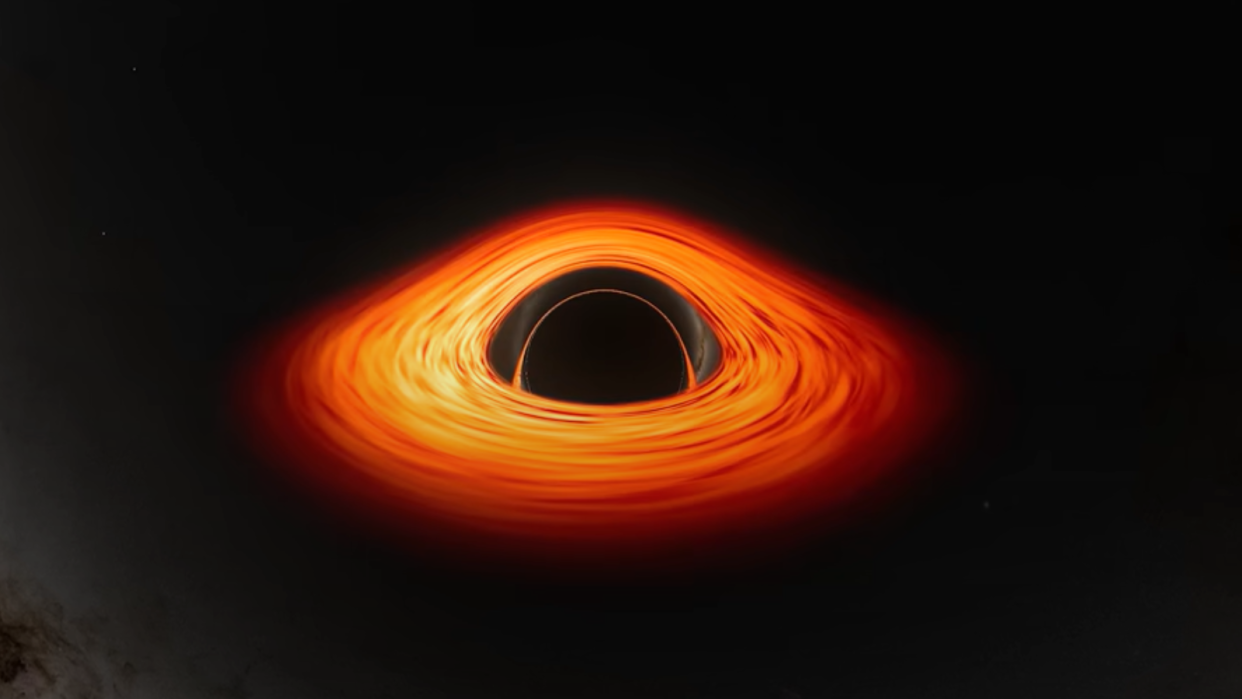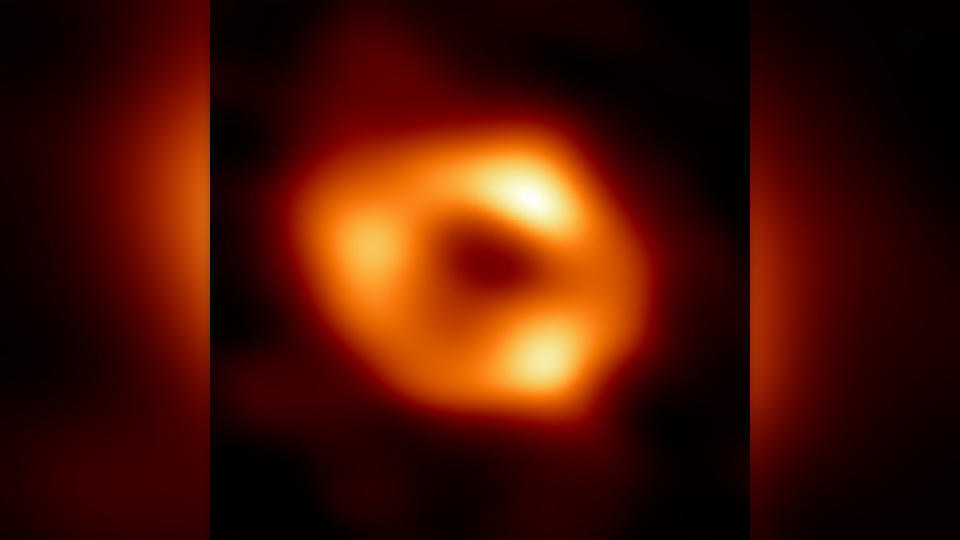Fall into a black hole in mind-bending NASA animation (video)

If you've ever wondered what would happen if you were unlucky enough to fall into a black hole, NASA has your answer.
A visualization created on a NASA supercomputer to celebrate the beginning of black hole week on Monday (May 6) takes the viewer on a one-way plunge beyond the event horizon of a black hole.
This outer boundary of a black hole marks the point at which not even light moves fast enough to escape the black hole's intense gravitational pull. That means the event horizon, marked by a golden ring outside of the heart of the black hole, is the point of no return past which no distant observer can ever recover information.
In a second simulation, we instead jet around the event horizon, in the process challenging our very notion of time and space.

"People often ask about this, and simulating these difficult-to-imagine processes helps me connect the mathematics of relativity to actual consequences in the real universe," creator of the visualizations Jeremy Schnittman, an astrophysicist at NASA's Goddard Space Flight Center in Greenbelt, Maryland, said in a statement.
"So I simulated two different scenarios, one where a camera — a stand-in for a daring astronaut — just misses the event horizon and slingshots back out, and one where it crosses the boundary, sealing its fate."
Falling into a black hole
The black hole that we, as the viewer of the NASA simulation, are falling into has a mass of around 4.3 times that of the sun. That makes it a supermassive black hole similar to Sagittarius A* (Sgr A*), the black hole at the heart of the Milky Way, which is estimated to have around this mass. Other supermassive black holes are much more massive, with some equivalent to billions of suns.
What is interesting is that if you have the choice of what black hole to tumble into, bigger is better.
"If you have the choice, you want to fall into a supermassive black hole," Schnittman said. "Stellar-mass black holes, which contain up to about 30 solar masses, possess much smaller event horizons and stronger tidal forces, which can rip apart approaching objects before they get to the horizon."
Falling toward the heart of the black hole, its singularity, the gravitational forces increase the point that tidal forces are so intense that an object is stretched vertically and squashed horizontally. This leads to that object, be it a star or an astronaut, being turned into a noodle or "spaghettified." It will come as no surprise that this process would kill any human that experiences it.
The more mass a black hole has, the further from its singularity its event horizon is located. That means with a supermassive black hole, an infalling astronaut would have the chance to pass the event horizon before meeting their grisly fate.
The simulations begin around 400 million miles (640 million kilometers) away from our target as we race into the supermassive black hole at speeds approaching those of light. As the black hole fills our view, the light from the matter surrounding it becomes more intense.
Closer to our destination, the very view of the background stars changes as the warping gravitational effects of the supermassive black holes on spacetime, and thus, light from background sources becomes apparent. Immediately around the black hole is a ring of light that loops around the black hole due to the extreme curvature of space the black hole creates with its tremendous mass.
Before the event horizon and the photon ring are reached, the infalling astronaut encounters a flattened cloud of hot and glowing gas called an accretion disk, which gradually feeds the black hole. This acts as a reference point for our journey.

This simulated supermassive black hole's event horizon gives it a width of around 16 million miles (25 million kilometers), around 17% of the distance between the Earth and the sun.
After a real-time duration of around 3 hours and 30-minute during two orbits of the black hole, we reach its event horizon. This marks the last point at which any distant observer watching our descent would be able to see us. They would forever see our image at the very edge of the event horizon, frozen.
Once the event horizon is crossed, it is a one-way trip to the central singularity of the black hole, the infinitesimally small point of infinite density at which all the physics of the known universe break down.
We'll never get there, though. Just 12.8 seconds after crossing the event horizon, we and our camera are spaghettified while we are still 79,500 miles (128,000 kilometers) from the singularity.
The second video gives us an opportunity to avoid this fate.
In this simulation, rather than falling into the black hole, we close in on the event horizon but never cross it. This takes us on a six-hour round trip around this black hole. If we return to our nearby mothership, the warping effects of the supermassive black hole on space and time will mean our fellow astronauts have aged around 36 minutes more than we have.
"This situation can be even more extreme," Schnittman said. "If the black hole were rapidly rotating, like the one shown in the 2014 movie 'Interstellar,' she would return many years younger than her shipmates."
RELATED STORIES:
— How do some black holes get so big? The James Webb Space Telescope may have an answer
— Brightest quasar ever seen is powered by black hole that eats a 'sun a day'
—Black hole-like 'gravastars' could be stacked like Russian tea dolls
The simulations of the tour of the black hole and the plunge into it were created using the Discover supercomputer located at NASA's Center for Climate Simulation. The supercomputer produced a staggering 10 terabytes of data, which NASA said is equivalent to half of the text found in the Library of Congress.
The simulations ran for five days on Discover, accounting for 0.35 of the supercomputer's 129,000 processors. It would take a commercial laptop around 10 years to create the same simulations.
Just like the event horizon of the supermassive black hole marks its outer boundary, these stunning simulations mark the beginning of a five-day-long journey through Black Hole Week that promises to stretch and squeeze our minds (in a good way).
